- Home
- Lloyd Alexander
Fifty Years in the Doghouse Page 2
Fifty Years in the Doghouse Read online
Page 2
"But all I did-" Ryan began. "What about the manes?" Norris cried. "You switched the horses, oh, that was clever. Now their manes hang the wrong way!" This was true. The matched pair had been groomed so that in their original position the manes would hang outward. In Ryan's arrangement, the manes hung inward-an atrocious breach of style. "Her stable boy can pull the manes," Ryan said defensively. "They'll hang the right way." He gulped and added, "Eventually."
"Oh yes," Norris said sourly, "after he clips them off, weights every hair with lead and combs them out every day for God knows how long. And what kind of a reputation will I have for selling horses like that?" If Mr. Norris felt so strongly about it, Ryan suggested returning the woman's money. "Give the money back?" Norris looked at him aghast. "You're a bigger fool than I thought!"
Later, when Norris calmed down, he patted Ryan on the shoulder. "You'll do well," he told the boy. "You have all the instincts of a natural-born horse-gypper." Ryan smiled. It was the highest compliment a horse dealer could offer. After the Exchange, Ryan became a teacher. His pupils were wagon horses at the Lord & Taylor stables, his classroom the streets of Manhattan, his textbooks steamrollers, elevated trains and blowing newspapers. At Lord & Taylor, Ryan was about the only youngster with enough skill to take out a new horse and teach him the facts of city traffic, and not to shy at the more curious human inventions. His first pupil, the most unmanageable in the stable, bolted as soon as they left the premises. With the wagon lurching crazily, the horse pounding ahead, it seemed to Ryan that he circled Manhattan in the space of five minutes. Terrified peddlers abandoned their pushcarts. Pedestrians dashed into the safety of alleyways and shops and wondered why Lord & Taylor was advertising a wild West show. At the end, when horse and rider both were winded, Ryan stopped, rubbed down the lathered animal and rubbed down himself. Somehow, during the ride, horse and man had come to know each other and Ryan calmly walked his student back to the stable. As far as the stable manager knew, it had been a quiet jaunt-an impression Ryan did not want corrected. In the course of all this, Ryan developed a certain bounce and resilience and an optimism utterly unquenchable. Today his grin has not diminished by a centimeter, and the boy still shows in his eyes. But in 1912, he had reason to worry. Before the end of that year the number of cars in New York nearly doubled, and Ryan knew they were there to stay. His beloved horses were on the way out; nothing could stop it. Ryan met the problem head-on. He taught himself to drive. Alone, as if he had undertaken to master the wildest colt ever foaled, he struggled with the mysteries of the internal-combustion engine-a silent, solitary duel.
By this time, Ryan felt he knew automobiles almost as well as he knew horses-he had taken a car apart piece by piece, bolt by bolt. And put it back together again. He went to work, then, demonstrating trucks for the Auto car Company. It was, he discovered, not too different from being a pusher on the horse exchange. Instead of horses, he put trucks through their paces. If the prospects liked them, they bought. Ryan's sales manager had an important deal going. "This outfit's changing over to trucks," he said. "They might order half a dozen of them. But they want somebody to come around and teach their teamsters how to drive." "Who is it?" Ryan asked. "Why, it's the dog and cat people," said the manager. "The ASPCA-You know, the Berghs-men." Ryan, at nineteen, was not too young to have heard the name 'Berghs-men' applied to ASPCA workers. It derived from the Society's founder, Henry Bergh, one of the most colorful figures of his day and, on the surface, the least expected to organize such a crusading movement. Born in 1813, son of a wealthy shipbuilder, the handsome mustachioed Bergh spent almost half his life as a perfect example of the idle rich. His major interests were clothes, dancing, the theater, poetry and music. To pass the time, Bergh and his wife traveled throughout Europe and the Near East. The Berghs knew almost everyone in society, the arts, letters and politics. In 1863, President Lincoln appointed Bergh as Secretary of the American Legation in St. Petersburg. There, the fifty-year-old man who might have been expected to remain a dandy for the rest of his life changed completely. Once, on the streets of St. Petersburg, the legation secretary noticed a droshky driver beating his horse.
This was such a common sight that it could not even qualify as a picturesque local custom. Yet Bergh made his own driver pull up. Glittering with the gold lace of his office, Bergh commanded the peasant to stop. The Russian obeyed-out of amazement, more than likely, at anyone taking the trouble to notice him. Every day from then on, Bergh drove through the city discovering similar cases of cruelty and intervening on behalf of the animal. "At last," Bergh said, "I've found a way to utilize my gold lace-and about the best use that can be made of it." In an atmosphere where mistreatment of animals, as well as humans, was taken for granted, Bergh's legation colleagues considered his behavior worse than eccentric; it was somehow in bad taste. Above all, they could not understand what had suddenly possessed this former dilettante. Bergh himself never offered an explanation for his changed attitude. Perhaps the idea had been at work unconsciously all these years. During his travels, Bergh had seen enough cruelty to animals to move any sensitive person; he had even noted critical observations in his diary. Whatever the motives, following his Russian experience the prevention of cruelty became the focus of his entire life. Bergh resigned his legation post. He went to London and conferred with the Earl of Harrowby, president of England's Royal Society for the Prevention of Cruelty to Animals. In 1865, Bergh returned to the United States and began his own work. Society's degree of civilization, it is said, can be estimated by the status of its women and children. Bergh applied the same yardstick to his country's treatment of animals. Under those terms, New York City qualified as one of the most barbaric in the world. Blood sports were rampant: cockfighting, dog fighting, rat-baiting, bull-baiting. In the everyday business of marketing produce, sheep, calves, cows and pigs were hauled or driven in an agony of broken legs and gouged eyes; chickens were plucked and scalded alive.
Even the most basic and valuable transportation animal, the horse, was routinely lashed, beaten with clubs, kicked and goaded. This is not taking into account the pathological tormenting of pets. Bergh had two points to make. The first was based on an appeal to human decency. "This is a matter purely of conscience," he said, "it has no perplexing side issues. Politics have no more to do with it than astronomy or the use of globes. No, it is a moral question in all its aspects ... it is a solemn recognition of that greatest attribute of the Almighty Ruler of the universe, mercy." Bergh himself, however, realized that the question involved more than mercy. If the average human being is not particularly swayed by moral considerations, he might be expected to respond to self-interest. Bergh's second point was eminently practical. "Animals contribute in a thousand ways to our comforts and necessities," Bergh said in one of his speeches. He pointed out that nearly 85,000,000 animals worked for the support and profit of his fellow citizens. Every year, cows gave 600,000 pounds of butter, 53,500,000 pounds of cheese, 236,000,000 gallons of milk. Sheep offered 100,000,000 pounds of wool. Market animals were worth $400,000,000 annually; the fisheries, $11,000,000. "Imagine the consequences if we were to be deprived of all the animals at one time. Could an earthquake or a second deluge be more disastrous? Could we get along without the animals? We could not!" Bergh made it clear that cruelty, aside from the issue of mercy, would eventually contaminate or destroy some of the country's most valuable natural resources. In New York, Bergh used all his influence and social contacts to gain backing for his organization.
He found one hundred prominent people to endorse the new Society. The group included John T. Hoffman, Mayor of New York, Peter Cooper, John Jacob Astor, William Cullen Bryant, Horace Greeley, Hamilton Fish, Augustus Belmont and James J. Roosevelt. Immediately afterward, Bergh left for Albany to receive a state charter of incorporation. Like the American SPCA itself, the charter was the first of its kind in the Western Hemisphere. Bergh also began working for the passage of his anti-cruelty law, to reinforce a statute that had lain dorman
t in New York State since 1829. Bergh's law proposed that "every person who shall, by his act or neglect, maliciously kill, maim, wound, injure, torture or cruelly beat any horse, mule, cow, cattle, sheep, or other animal belonging to himself or another shall, upon conviction, be adjudged guilty of a misdemeanor." The ASPCA was granted authority to enforce this law. Bergh set up the first ASPCA headquarters in a couple of attic rooms at Broadway and Fourth Street. Rather than waste money that could further the Society's work, Bergh outfitted the offices with what he called "the very plainest kind of kitchen furniture." The story goes that John Hoffman, who had since become Governor of New York State, while visiting Bergh's headquarters tripped over a hole in the rug. "Why, Mr. Bergh," said Hoffman, "buy yourself a better carpet and send the bill to me."
"No, thank you, Governor," said Bergh. "But send me the money, and I will put it to better use for the animals." Bergh's idea of preventing cruelty to animals was plausible, obvious, necessary and, in the long run, beneficial. As a result, and as might have been expected, a great part of the general public opposed it furiously. Most of the newspapers, relieved to find a pretext for ignoring Boss Tweed and municipal corruption, discovered Bergh.
They launched what may well be the longest, most venomous and vituperative campaign against a single individual in the history of journalism. To begin with, the lean, lanky Bergh, with his top hat, mustache and dandified clothes, made an easy subject for caricature. Operating at first with a staff of three-a young boy, a Negro and a reformed convict-Bergh had to do most of his own legwork. He himself patrolled the streets, issued warnings and even made arrests. Bergh, in effect, was the ASPCA; and the ASPCA was Bergh. Thus, the newspapers had a neat, compact target. From the beginning, Bergh suffered constant journalistic abuse. When he managed to win some improvement in the treatment of livestock, the Herald wrote mockingly: Calves now ride to market in a sort of triumph, sitting upright with that calm, unsophisticated expression peculiar to Horace Greeley and other persons from the country. The Sunday Mercury added: The mild and gentle countenance of the poor calves, and the rush of blood to the head which disturbs the reflections of doomed capons, touches the heart of the gentle Bergh.... The Egyptians worshiped crocodiles and bull-calves, and we this day maintain a set of high priests of the same denomination. Once, Bergh protested the treatment of sea turtles shipped into New York harbor. It was current practice to store the living creatures on their backs, with ropes run through holes gouged in their fins. Bergh went so far as to arrest one schooner captain and his crew. Bergh lost his case when the court, through an interpretation which only the legal mind can explain, decided that the law was made for animals and turtles were not animals. With the turtle case, Bergh became fair game for anyone feeling the need to demonstrate his wit. The Herald devoted six columns to the trial.
One restaurant owner displayed a turtle with its head resting on a pillow. Bergh was called "a maudlin sympathizer with persecuted rats and unfortunate bedbugs." The ASPCA began to receive calls that a horse, unblanketed, was being left to stand all night in a snowstorm. Bergh investigated. The horse was made of wood. Someone else complained that a butcher had hung a raccoon by the tail from an iron bar. It was true. The raccoon had been hanging there for a month-stuffed. Bergh had his own public supporters in the matter: Louis Agassiz, the great naturalist; Horace Greeley; and, later, Harriet Beecher Stowe and her brother, Henry Ward Beecher. The truth of the matter was that Bergh welcomed attack as much as he welcomed encouragement. Anything, he knew, was better than being ignored. He called the Herald's satire "the greatest service I have ever had.... And to the funny fellow who wrote that account, I have always felt grateful, for his ridicule awakened the public from its apathy. Next day, one million people understood my purpose, and, in a week, more millions knew that there was a Society for the defense of inferior animals." Within two years, other states and cities adopted Bergh's reforms: Buffalo, Philadelphia, Boston, San Francisco. By 1869, there were SPCA's in Maine, New Jersey, Texas, Massachusetts and Canada. In New York, the ASPCA managed to scrape together enough money to keep functioning: from a few charitable contributions by the public, a couple of modest bequests, and, as always, from Bergh's own resources which he continued to pour into the organization. To many of the newspapers and a segment of the public, Bergh remained a target of ridicule. Even his staff workers were not exempt, and the abuse was not always verbal watching a parade, one Berghs-man saw the driver of a butcher's wagon bring his horse to a stop by gashing its nose with an iron barb on a stick.
When the Berghs-man tried to prevent this, the spectators knocked him down and nearly beat him to death. (The newspapers called Bergh and his nien "overzealous.") when Bergh finally succeeded in preventing the overloading of horse cars, the operating companies screamed that he was trying to ruin them. When he protested the use of painful check reins, agonizing burr-bits and the docking of horses' tails, the horse lovers of New York rose up against him in righteous indignation. When he inspected slaughter houses, butchers threw viscera in his face. Bergh did not confine his work to preventing cruelty to animals. In 1874, a woman implored Bergh to help a ten year old girl who had been repeatedly whipped and mutilated by her foster mother. The charitable societies had no legal basis for action; statutes against cruelty to children did not exist. Bergh acted in the only way open to him. He had the child, little Mary Ellen, brought to court on the grounds that humans were animals-and as animals deserved the protection of the law. Jacob Riis was in court when Bergh and his lawyer associate, Elbridge Gerry, presented the case. "I saw a child brought in," Riis wrote, "carried in a horse blanket, at the sight of which men wept aloud. I saw it laid at the feet of the judge, who turned his face away, and in the stillness of that courtroom I heard the voice of Henry Bergh. 'The child is an animal,' he said. 'If there is no justice for it as a human being, it shall at least have the rights of the cur in the street. It shall not be abused.' And as I looked I knew I was where the first chapter of the childcare’s rights was written, under warrant of that made for the dog." The court sent Mary Ellen to a home for children; foster mother received a one-year jail sentence.
But Bergh had realized that a society for the prevention of cruelty to animals was not enough. Bergh founded the Society for the Prevention of Cruelty to Children in 1875-with much the same journalistic reaction that had greeted the ASPCA. Bergh had always been criticized for worrying more about animals than humans. Now that he planned to give some attention to humans, at least of the younger ages, the World offered this comment on Bergh's proposed legislation: It is announced that Mr. Bergh's preposterous bill for clothing him with the power to discipline all the naughty children of New York is to be the special order of the day in Albany. We sincerely hope that it may not finally be kicked out of the Legislature, as it richly deserves to be, until the public mind shall have had time to get itself thoroughly enlightened as to the state of things in which it has become possible for such a person as Henry Bergh to bring the Legislature to the point of seriously entertaining such an impudently senseless measure. The Legislature, surprisingly, passed this "impudently senseless measure." John D. Wright became the SPCC's first president. Bergh served as vice-president, with Peter Cooper, Theodore Roosevelt, Cornelius Vanderbilt and others, and continued to put most of his effort into the ASPCA. The biggest surprise about the ASPCA was not the public's initial rejection. More amazing, in spite of everything, the Society got things done. At first, the ASPCA progressed by inches. Twenty years may be the saturation point in overcoming resistance to a valuable idea. This, at least, was how long it took the Society. After two decades of constant exposure to the ASPCA's work, the public finally began to think that this man Bergh might have something after all. The ASPCA had established animal (and human) drinking fountains, prevented disease by its insistence on sanitary butchering, saved the meat industry millions by suggesting improved transportation methods; it had relieved the sufferings of thousands of work animals and pets.
By the late l880's, New Yorkers had taken the Society pretty much for granted; it was an accepted institution and they would have been furious had anyone suggested curtailing its activities. Bergh himself had little time to enjoy the public's change of heart. He died on March 12, during the blizzard of 1888. P. T. Barnum, who had tangled with Bergh many times, went to the graveside. The enormous wreath he left was worthy of the greatest showman on earth. His remarks were less flamboyant and more deeply felt: "Henry Bergh is to be honored and respected for his unselfish devotion to such an excellent cause." Fifteen years before, Henry Ward Beecher had written a whimsical article envisioning Bergh's funeral. "Will there not be a commotion among animals?" the preacher asked. "Without a doubt," he continued, "all good men will attend. The birds will tell it. The beasts of the field will know it. Even tropical turtles will feel briny tears." Imagining Bergh's entry into Heaven, Beecher went on: "Airy elephants will bear him up; the spirit of released horses will prance upon him; and Maltese grimalkins will purr celestial satisfaction, and rub his legs with their most beseeching caresses. Dogs without number, woolly, hairy or silk-coated, will turn their lustrous eyes upon him with refulgent gratitude. Yes, the whole air will be full of emancipated animals, pressing around like those backgrounds of heads in the pictures of the old masters, all tenderly eager to greet and honor the benefactor of animals." Perhaps, in 1888, it had been just that way.
The Society Bergh founded was the 'dog and cat people' interested in buying motor ambulances from Ryan's boss. By virtue of its founding date, it was the oldest humane society in the Western Hemisphere, and, as an organization, rapidly becoming the most extensive. Since 1894, New York had put the Society in charge of dog-licensing for New York City. The ASPCA operated a shelter for stray animals. It had a whole staff of special agents to investigate complaints of cruelty, to check conditions in stockyards and slaughter houses, markets, livestock auctions. In its rescue work, the Society was the best friend a horse-or dog or cat-could have in New York. That summer of l912, the Society had just opened a full-scale animal hospital. Two years before, a patroness had donated two motor ambulances, but the Society's work had so increased that now it needed more vehicles. "This might turn into a good account," said the sales manager. "I want you to go over there and really show them what these trucks can do." Ryan promised to do his best, although in a way he felt he was sabotaging some of his best friends. As soon as a driver had been retrained to handle a truck, his team was put out to pasture on a nearby farm. Thus, the harder Ryan worked, the more horses would be retired. Few of the drivers had ever handled a truck before. To some, Ryan had to explain the operations in terms of "Giddap!" and "Whoa!" There were times, at the end of a hard day, when Ryan himself mixed horsemanship with truckmanship. "Rein her up," he would shout when he wanted a student to apply the brakes. The training course finally ended. Only one horse-drawn vehicle remained: the Society's enormous red and gold horse ambulance with brass mountings and patent leather upholstery. The famous ambulance had all the style and dash of a fire engine, the brilliance of a circus wagon and, to Ryan, it was the most glamorous, gorgeous vehicle in the world.

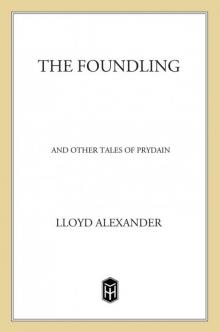 The Foundling and Other Tales of Prydain
The Foundling and Other Tales of Prydain The Castle of Llyr
The Castle of Llyr Taran Wanderer (The Chronicles of Prydain)
Taran Wanderer (The Chronicles of Prydain) Taran Wanderer
Taran Wanderer The Iron Ring
The Iron Ring The Arkadians
The Arkadians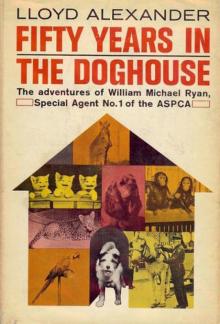 Fifty Years in the Doghouse
Fifty Years in the Doghouse The High King
The High King The Remarkable Journey of Prince Jen
The Remarkable Journey of Prince Jen The Book of Three
The Book of Three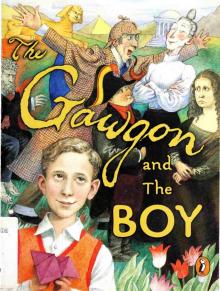 The Gawgon and the Boy
The Gawgon and the Boy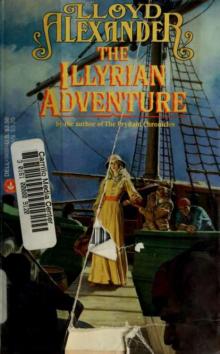 The Illyrian Adventure
The Illyrian Adventure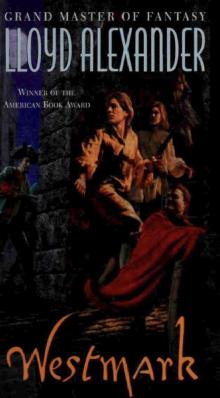 Westmark
Westmark The Black Cauldron
The Black Cauldron The Book of Three cop-1
The Book of Three cop-1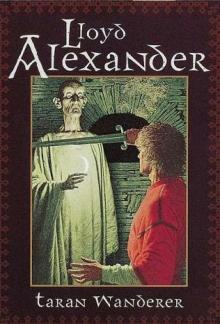 Taran Wanderer cop-4
Taran Wanderer cop-4 The Castle of Llyr cop-3
The Castle of Llyr cop-3 The High King (Chronicles of Prydain (Henry Holt and Company))
The High King (Chronicles of Prydain (Henry Holt and Company))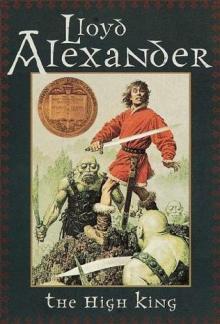 The High King cop-5
The High King cop-5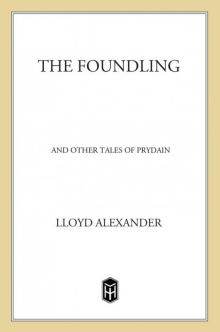 The Foundling
The Foundling The Castle of Llyr (The Chronicles of Prydain)
The Castle of Llyr (The Chronicles of Prydain)